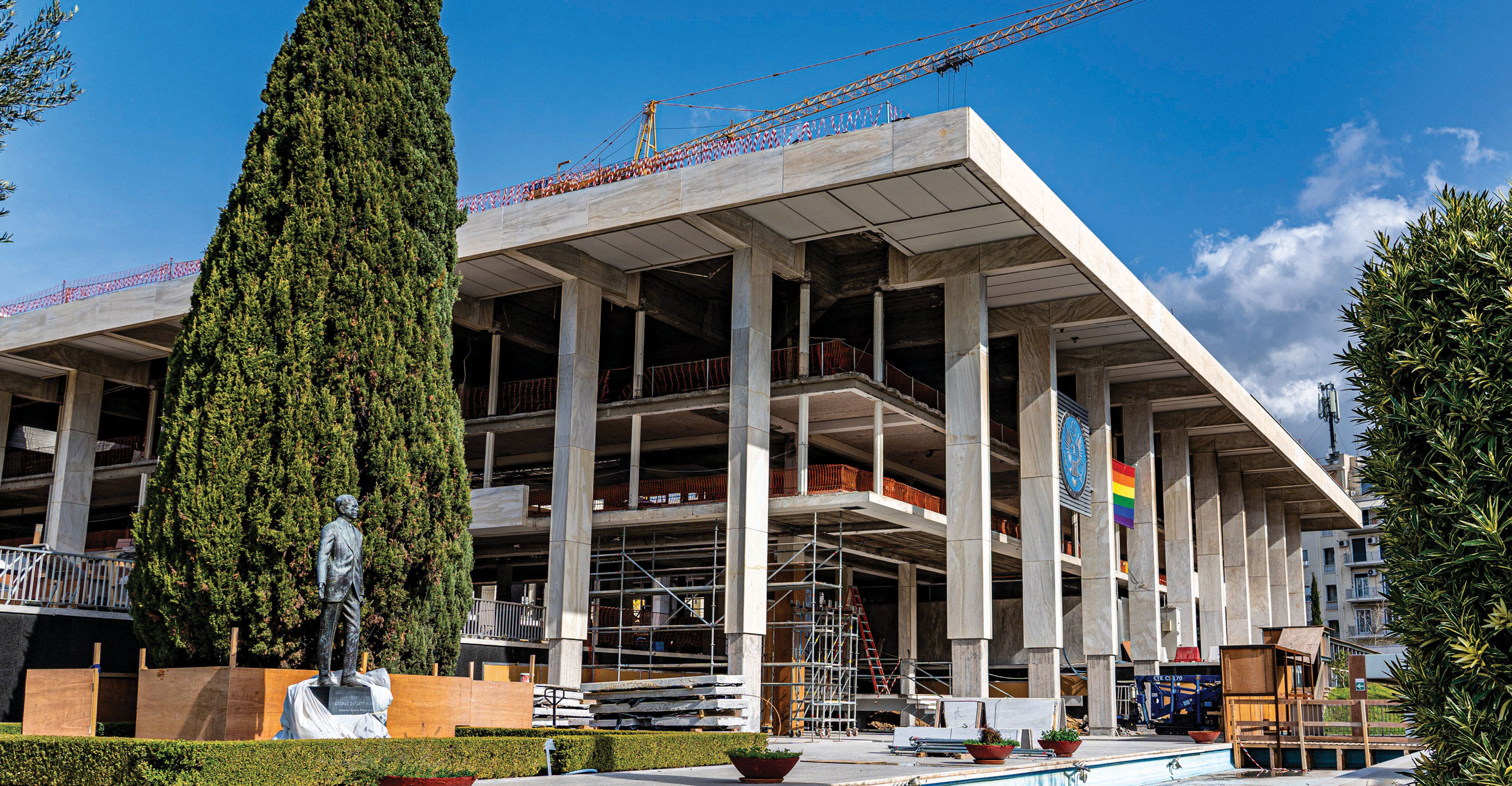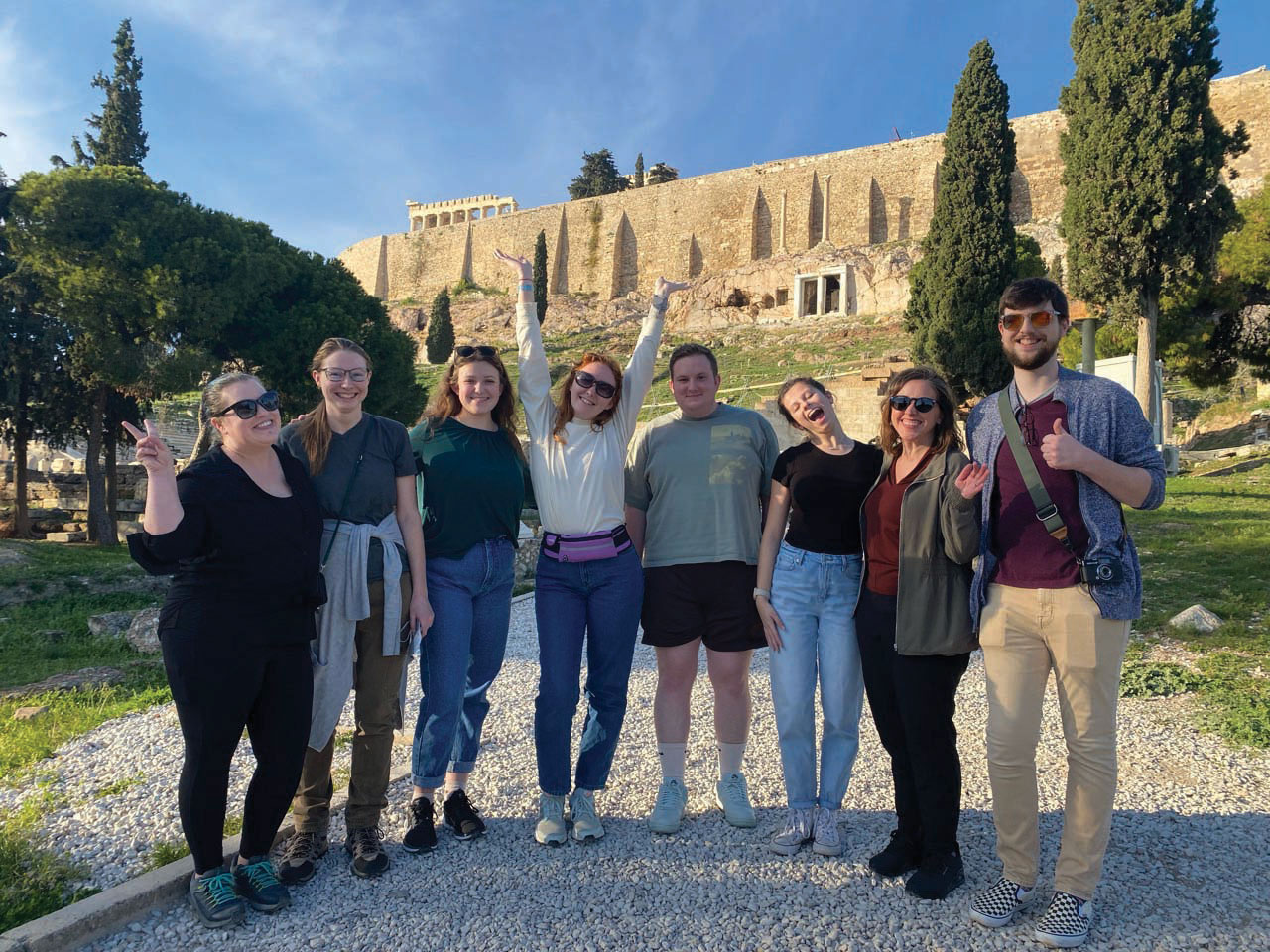
Gropius Project sparks campuswide collaboration for OSU students
Friday, April 5, 2024
Media Contact: Sydney Trainor | Communications and Media Relations Specialist | 405-744-9782 | sydney.trainor@okstate.edu
Inside the more than 170 U.S. embassies scattered worldwide lies extensive collections of art dedicated to fostering cultural diplomacy.
Yet, behind walls and high security clearances, these collections remain elusive to all but personnel. Despite being owned by U.S. citizens, the restricted access ensures that few ever view the pieces without advanced planning and background checks.
In 1961, the U.S. opened an embassy building in Athens, Greece, designed by architect Walter Gropius. Currently, the embassy is being relocated to a new building offering an opportunity for students to participate in the creative repurposing of the historic structure.
The U.S. Department of State plans to renovate the Gropius building, preserving its significant external architecture while gutting and repurposing the interior for exhibits and events.

Dr. Brian Hosmer, OSU Department of History head, was approached by a former student — Joseph Angemi, senior curator for the state department’s Office of Cultural Heritage — about collaborating on this project. Angemi is involved with curating, protecting and displaying artwork that belongs to U.S. embassies all over the world.
As a result, The Gropius Project was launched, using a transdisciplinary approach that involves OSU faculty and students from the College of Engineering, Architecture and Technology and the College of Arts and Sciences. During the winter intersession, students embarked on the first phase, traveling to Athens to visit the embassy and engage with embassy personnel.
Upon their return from studying abroad, around 30 history and architecture students enrolled in a historic preservation or adaptive reuse course as part of the program’s next phase. Collaborating in groups — each comprising one architect, one or two history students, and one study abroad participant — they address assigned topics for the second part of the Gropius project.
“The idea was that our students would assess the art that’s there and then — over the course of the spring semester — design an exhibit, and the architecture students would also do a project about the interior space,” Hosmer said. “It’s this wonderful combination of history and museum studies and public history and architecture. We love that because we’re working not only across departments but across colleges.”
The course emphasizes hands-on workforce development, enabling students to finish a project that enhances their academic and career pursuits. Through practical application, students gain skills in appraising and organizing art materials, public programming, public relations, and project development and management. Students also establish contacts with potential employers at the state department who can help advance their careers.
“My students at the end of this will have learned about interdisciplinary work, but they’ve also learned a lot about the importance of researching a building’s history before moving,” said Sarah Ra, assistant professor of architecture. “We talked about first do no harm when you’re working with existing buildings, it’s like an architect’s Hippocratic Oath.
“Usually, we design new things from the ground up. This is our first course at the School of Architecture that’s focused on specifically working on existing buildings. These students are learning the process of doing their historical research. And that’s why this has been strong with history.”
“It’s this wonderful combination of history and museum studies and public history and architecture. We love that because we’re working not only across departments
The project focuses on one question “What is America’s role internationally today?” The students are evaluating how the U.S. conveys its presence through embassies around the world.
“One of the cool things about this opportunity is that our students were given access, we got to go inside the building, and just ask some questions about it,” said Dr. Laura Arata, director of OSU public history. “Now we’re working on asking questions related to this building and what it represents. It was built at an interesting time in American-Greek foreign relations, when the U.S. was trying to exhibit democracy and present itself as this open democratic country and welcome other countries into that fold of democracy, which is kind of special in Greece, because Greece is widely considered the birthplace of democracy.”
Looking to the future, the state department has invited OSU to collaborate on similar programs and is set to come to campus to see the final project results.
“There’s a lot to be said to have OSU students serve as representation of the public voice of United States,” Arata said. “We’re in the middle of the country, a land-grant university, and our students come from all different backgrounds and walks of life. There is an opportunity to get some fresh voices asking some of these questions.”
Photos By: Provided and U.S. State Department
Story By: Sydney Trainor | GLOBAL Magazine
